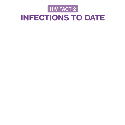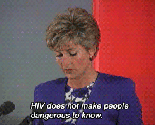-
About
- About Listly
- Community & Support
- Howto
- Chrome Extension
- Bookmarklet
- WordPress Plugin
- Listly Premium
- Privacy
- Terms
- DMCA Copyright
- © 2010-2025 Boomy Labs


Listly by education
National HIV Testing Day first occurred on June 27th, 1995, making this year its 23rd anniversary. In honor of the many years of education, research, and outreach regarding HIV testing that have occurred since then, the Planned Parenthood Great Plains education team is sharing twelve things you need to know about HIV. Check it out below!

HIV, the Human Immunodeficiency Virus, is the name of a virus that infects the cells of a body. Initially, people’s bodies are affected by this virus. AIDS, Acquired Immune Deficiency Syndrome, is a series of symptoms caused by the HIV virus. It takes some time for HIV to turn into AIDS. And sometimes, with proper treatment, it never does.

HIV is actually a type of retrovirus. Retroviruses are composed of RNA, rather than DNA. Retroviruses spread by using an enzyme called reverse transcriptase which converts RNA to DNA. The viral DNA is then incorporated into the DNA of the host cell.

The CDC estimated 1.1 million people were living with HIV in the United States in 2015. According to the WHO, an estimated 36.7 million people were living with HIV worldwide at the end of 2016.

HIV can be spread multiple different ways. It can be passed from mother to child in the womb, during childbirth, or through breastmilk. HIV can also be passed during unprotected vaginal or anal sex. Lastly, it can be passed through HIV-contaminated blood, whether that be through sharing needles, unsterilized surgical equipment, or through blood transfusions. HIV cannot be spread through saliva or by touching.

Although there is no cure, HIV can be treated and managed with a type of medication called anti-retroviral therapy (ART). HIV medication needs to be taken as prescribed by a doctor.

The earlier HIV is detected, typically the more successful a person's treatment will be. For that reason, the CDC recommends anyone in a monogamous sexual relationship be tested annually for HIV. For people who have multiple sex partners, the CDC recommends getting tested every 3-6 months. Testing doesn't have to be expensive either. Insurance often covers the cost and sometimes universities and various health centers offer free or reduced-cost HIV testing for people who do not have insurance.

Using internal and external condoms, along with regular HIV/STI tests, and having one or few sexual partners are some of the best ways to decrease your risk of acquiring HIV. Even if you are using another form of birth control, it is important to still use condoms every time for STI/HIV prevention.

If a person is at risk for acquiring HIV, they could ask their doctor about PrEP or PEP. PrEP stands for pre-exposure prophylaxis. It can help prevent a person from acquiring HIV prior to exposure to the virus. PEP stands for post-exposure prophylaxis. It can decrease a person's chance of acquiring HIV after being exposed to the virus. PEP can be used up to 72 hours after the potential exposure to the virus.

Although some people report symptoms of fever or fatigue, the most common symptom of HIV is not having any symptoms at all. The only way for someone to know for sure if they have HIV is to get tested. If a person tests positive, it is important that they seek treatment immediately

Remember when I said the most common symptom is "no symptom at all". Well, this is just to emphasize the fact that a person can look and feel completely healthy and still have undiagnosed HIV. If untreated, they may even be able to pass it to others. For this reason, it is important for people to ALWAYS use a condom during vaginal or anal sex. It might even be a good idea for new couples to get tested together and have conversations about HIV and STIs prior to having sex.

From improved medications, to the search for a cure, advancements in HIV/AIDS-related research are happening all of the time. Keep up-to-date by reading and watching the news. It is amazing to think how far HIV research has come since the virus was discovered in the 1980s.

With proper treatment, people with HIV can live normal and healthy lives. Although there is no cure, HIV can be managed. With treatment, people with HIV can at times decrease their viral load, allowing people with HIV to have healthy sexual relationships with people who do not have HIV or to have children with a decreased chance of passing HIV from mother to child. For more information about HIV, please refer to Planned Parenthood's information about HIV at https://www.plannedparenthood.org/learn/stds-hiv-safer-sex/hiv-aids .